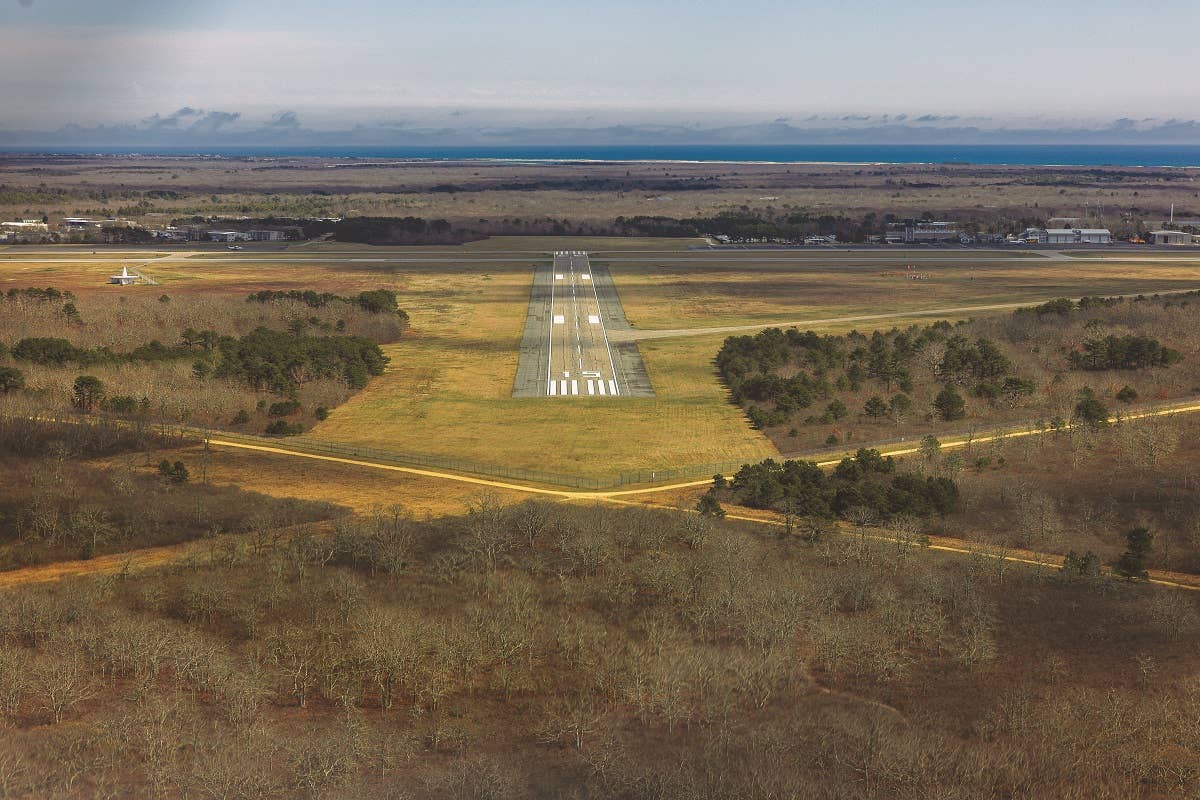Chart Wise: Martha’s Vineyard ILS or LOC Rwy 24
Martha’s Vineyard is a beautiful island to visit and an interesting approach.

On approach to Martha’s Vineyard. [Stephen Yeates]
Its downtown area is known for shopping and dining—but that isn’t all Martha’s Vineyard has to offer. Many visitors and residents alike know the island for its outdoor features, which include cliffs, gardens, wildlife sanctuaries, beautiful northeastern beaches, and ongoing natural beauty. Oh, and the fresh seafood can’t hurt either. Can you imagine a better way to first scope out the area than arriving by air? I can’t. But sometimes you might find yourself arriving in weather that requires an instrument flight plan. And one of the most reliable approaches to the Martha’s Vineyard airport is the ILS.
If you're not already a subscriber, what are you waiting for? Subscribe today to get the issue as soon as it is released in either Print or Digital formats.
Subscribe NowA) ACK VOR TO TRANSITION
Coming from the south or east, a pilot could expect to be asked to transition over the Nantucket (ACK) VOR onto the approach. A thicker line on the 323 radial outbound from the ACK VOR denotes that this is a feeder route from an initial approach fix (IAF) onto the approach. A NoPT denotation also indicates that if a pilot transitions onto the approach from this point, they would not be expected to complete a procedure turn to establish onto the inbound ILS/LOC course of 236 degrees when reaching the CHOPY intersection. This is a pretty sharply angled turn, though, so a pilot should be ready for it if they choose to use this method of establishing themselves to the inbound course.
B) DME FROM THE LOC
When transitioning across DME points on this approach, a note highlights that the DME source is IMVY. This is an indication when the DME is sourced from the localizer frequency, not from the VOR that happens to have the same identifying letters “MVY,” just without the “I” in front of it. This can be confusing, so if you are referencing a DME source when flying this approach, make sure you are tuned to the correct navigation source for that data.
C) TWO MISSED OPTIONS
This approach has a standard missed approach fix at the CLAMY intersection, and a second missed approach fix (the Alternate Missed Apch Fix), also at the CLAMY intersection. This can be confusing, but the reason relates to what navigation sources are available. The primary missed approach procedure at CLAMY has a pilot establish in a hold with an inbound course of 090 degrees with left turns while using the 270 radial from the ACK VOR. If that VOR was out of service, the alternate missed approach could be used. The alternate at the same intersection has a pilot reference the PVD VOR on a 143 radial and fly inbound legs on that radial with left turns. Which of these you might fly could depend on NOTAMs that you might check ahead of flight that could indicate if the ACK VOR was out of service or if you had an IFR GPS to substitute for navigation and establishment into the hold if needed.
D) DME NOT REQUIRED
While DME is listed on this approach to help identify points, a pilot could actually fly it without DME. The IAF at ACK is able to be navigated without it, and a pilot could identify the CHOPY and BEPAY intersections using cross radials. A missed approach point when flying the approach as an ILS would be a decision height, and in absence of DME a pilot could use timing to make a decision if conducting a localizer-only approach. There aren’t many approaches like this left that allow a pilot to fly the approach without DME or a substitutable GPS system, and they are handy to identify in the event of an emergency.
This column first appeared in the July 2023/Issue 939 print edition of FLYING.

Subscribe to Our Newsletter
Get the latest FLYING stories delivered directly to your inbox







